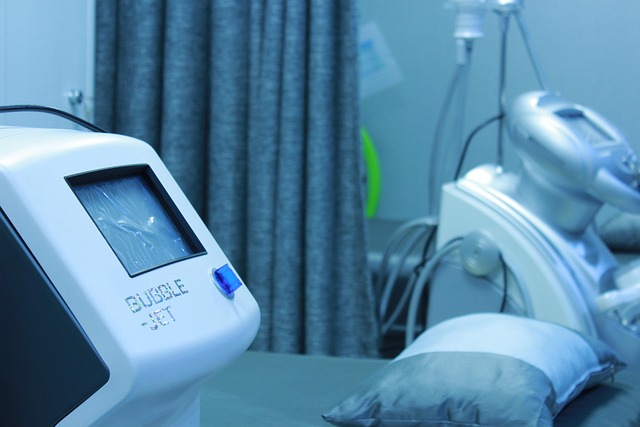Laser skin tag removal procedure involves using a handheld device to target and destroy surface tags with minimal downtime. At-home devices offer cost-effective DIY solutions, but professional clinics provide advanced technology. Consulting a dermatologist is crucial for safety and effectiveness, ensuring proper cleaning, targeting, and post-treatment care to prevent recurrence. While at-home treatments may be convenient, they carry risks like skin irritation; professional precision offers better results compared to other methods.
Considering buying a laser device for DIY skin tag removal? This comprehensive guide delves into the world of at-home laser treatments, offering a safe and effective alternative to professional services. From understanding the laser skin tag removal procedure to choosing the right device and following step-by-step instructions, we cover everything you need to know. Additionally, explore potential benefits and risks associated with DIY laser skin tag removal.
- Understanding Laser Skin Tag Removal Procedure
- Choosing the Right Laser Device for Home Use
- Step-by-Step Guide to Safe Laser Skin Tag Treatment
- Potential Benefits and Risks of DIY Laser Skin Tag Removal
Understanding Laser Skin Tag Removal Procedure

Laser skin tag removal procedure involves using a concentrated beam of light to destroy the small tags on the skin’s surface. This non-invasive method is a popular choice for those seeking to eliminate skin tags in the comfort of their homes. The process typically starts with cleaning and preparing the skin, followed by the application of a topical anesthetic to minimize discomfort. A handheld laser device is then used to target each skin tag, emitting pulses of light that penetrate the skin and break down the tissue. This causes the skin tag to disappear over time as the body naturally absorbs and regenerates the affected area.
Compared to traditional methods like surgery or cryotherapy, laser skin tag removal offers a quicker recovery time and minimal downtime. It is generally considered safe for most people; however, individuals with certain skin conditions or those taking specific medications might need to consult a healthcare professional before proceeding. Interestingly, some people opt for at-home laser devices, while others visit specialized clinics like the Blackpool Skin Tag Clinic. While not always covered by insurance, laser skin tag removal is increasingly recognized as an effective and permanent solution, making it a viable option for many.
Choosing the Right Laser Device for Home Use

When considering laser skin tag removal yourself at home, it’s crucial to choose a device that suits your needs and provides effective results. The right laser device should be suitable for removing skin tags safely and comfortably in the privacy of your own home. Look for features like adjustable energy levels and precise targeting, as these ensure you can tailor the treatment to your specific skin tag size and type.
Many options are available, from handheld devices to professional-grade lasers used in clinics like the Liverpool Skin Tag Clinic, Wakefield’s private skin tag removal service, or Southend-on-Sea’s private clinic. While professional treatments offer advanced technology, at-home devices can be a cost-effective alternative with consistent results when used correctly. Always follow the manufacturer’s instructions and consult a dermatologist for guidance on the best laser device for your skin tag removal journey.
Step-by-Step Guide to Safe Laser Skin Tag Treatment

Step-by-Step Guide to Safe Laser Skin Tag Treatment
If you’re considering laser skin tag removal yourself, it’s crucial to understand the procedure for a safe and effective treatment. Firstly, consult with a dermatologist or visit a reputable Blackburn skin tag clinic to ensure your skin is suitable for laser therapy. The technician will assess the number and size of skin tags, providing insights into the best treatment plan. Before the session, clean the affected area gently, avoiding any lotions or oils that could interfere with the laser’s effectiveness.
During the laser skin tag removal procedure, a specialized laser device will be used to target and destroy the skin tags. The laser emits a precise beam, breaking down the tissue while minimizing damage to surrounding skin. The process is generally non-invasive, causing minimal discomfort. After the treatment, slight redness and swelling are normal, but these symptoms typically subside within a few days. It’s essential to follow post-treatment care instructions, including keeping the area clean and protected from sunlight. Regular check-ups with your dermatologist can ensure the skin tags don’t return.
Potential Benefits and Risks of DIY Laser Skin Tag Removal

The DIY approach to laser skin tag removal offers several potential advantages. It provides a convenient and cost-effective solution for those seeking to eliminate skin tags in the comfort of their homes. With access to affordable laser devices, individuals can take control of their skincare routines without the need for frequent clinic visits. This method allows for regular treatment sessions, potentially leading to faster results compared to sporadic professional treatments. Additionally, it eliminates the travel time and waiting periods often associated with clinical procedures.
However, there are risks involved in attempting DIY laser skin tag removal. Inaccurate device usage or improper settings might result in skin irritation, redness, or even permanent pigment changes. Skin tags have varying characteristics, and what works for one person may not be suitable for another. It’s crucial to understand that while at-home devices can be effective, they might not deliver the same level of precision as professional treatments. Comparing laser skin tag removal cost with alternative methods like cold fusion is essential, considering both effectiveness and potential side effects. Some clinics, such as Preston Skin Tag Clinic, offer specialized services, ensuring expert care for stubborn or numerous skin tags.
Removing skin tags at home with a laser device is an accessible option for those seeking a painless, non-invasive solution. By understanding the laser skin tag removal procedure and choosing the right device, you can achieve effective results in the comfort of your own home. Always follow safety guidelines and consult a dermatologist if needed to ensure the best possible outcome. Remember, while DIY methods offer convenience, they may not be suitable for everyone, so informed decision-making is key.
